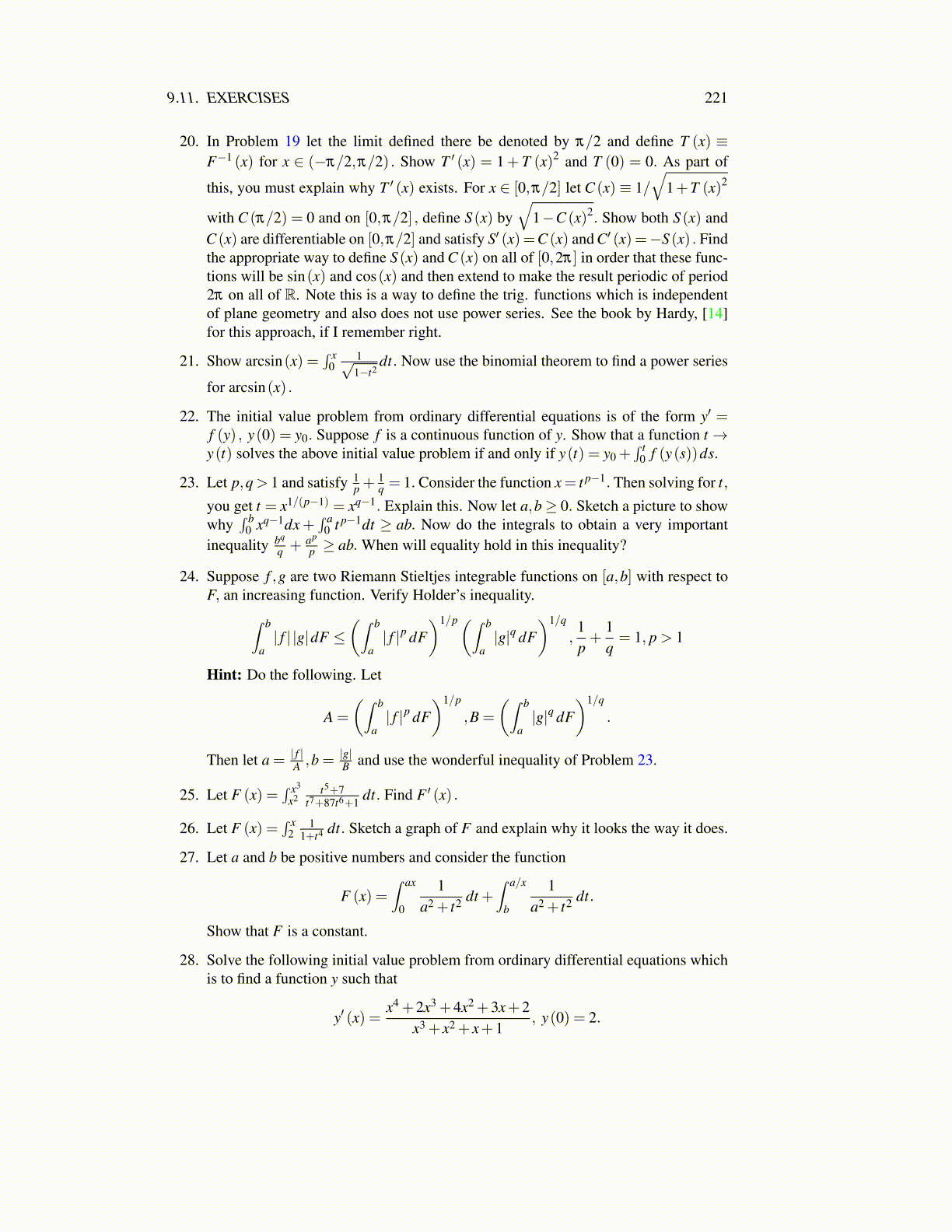
9.11. EXERCISES 221
Next show by another change of variables that this integral equals∫ b/2
−b/2
f (b/2− y)f (y+b/2)+ f (b/2− y)
dy.
Thus the sum of these equals b.
38. Let there be three equally spaced points, xi−1,xi−1 +h≡ xi, and xi +2h≡ xi+1. Sup-pose also a function f , has the value fi−1 at x, fi at x+ h, and fi+1 at x+ 2h. Thenconsider
gi (x) ≡ fi−1
2h2 (x− xi)(x− xi+1)−fi
h2 (x− xi−1)(x− xi+1)
+fi+1
2h2 (x− xi−1)(x− xi) .
Check that this is a second degree polynomial which equals the values fi−1, fi, andfi+1 at the points xi−1,xi, and xi+1 respectively. The function gi is an approximationto the function f on the interval [xi−1,xi+1] . Also,∫ xi+1
xi−1
gi (x) dx
is an approximation to∫ xi+1
xi−1f (x) dx. Show
∫ xi+1xi−1
gi (x) dx equals h fi−13 + h fi4
3 +h fi+1
3 .
Now suppose n is even and {x0,x1, · · · ,xn} is a partition of the interval, [a,b] and thevalues of a function f defined on this interval are fi = f (xi) . Adding these approxi-mations for the integral of f on the succession of intervals,
[x0,x2] , [x2,x4] , · · · , [xn−2,xn] ,
show that an approximation to∫ b
a f (x) dx is
h3[ f0 +4 f1 +2 f2 +4 f3 +2 f2 + · · ·+4 fn−1 + fn] .
This is called Simpson’s rule. Use Simpson’s rule to compute an approximation to∫ 21
1t dt letting n = 4.
39. Suppose x0 ∈ (a,b) and that f is a function which has n+ 1 continuous derivativeson this interval. Consider the following.
f (x) = f (x0)+∫ x
x0
f ′ (t) dt
= f (x0)+(t− x) f ′ (t) |xx0+∫ x
x0
(x− t) f ′′ (t) dt
= f (x0)+ f ′ (x0)(x− x0)+∫ x
x0
(x− t) f ′′ (t) dt.
Explain the above steps and continue the process to eventually obtain Taylor’s for-mula,
f (x) = f (x0)+n
∑k=1
f (k) (x0)
k!(x− x0)
k +1n!
∫ x
x0
(x− t)n f (n+1) (t) dt
where n!≡ n(n−1) · · ·3 ·2 ·1 if n≥ 1 and 0!≡ 1.